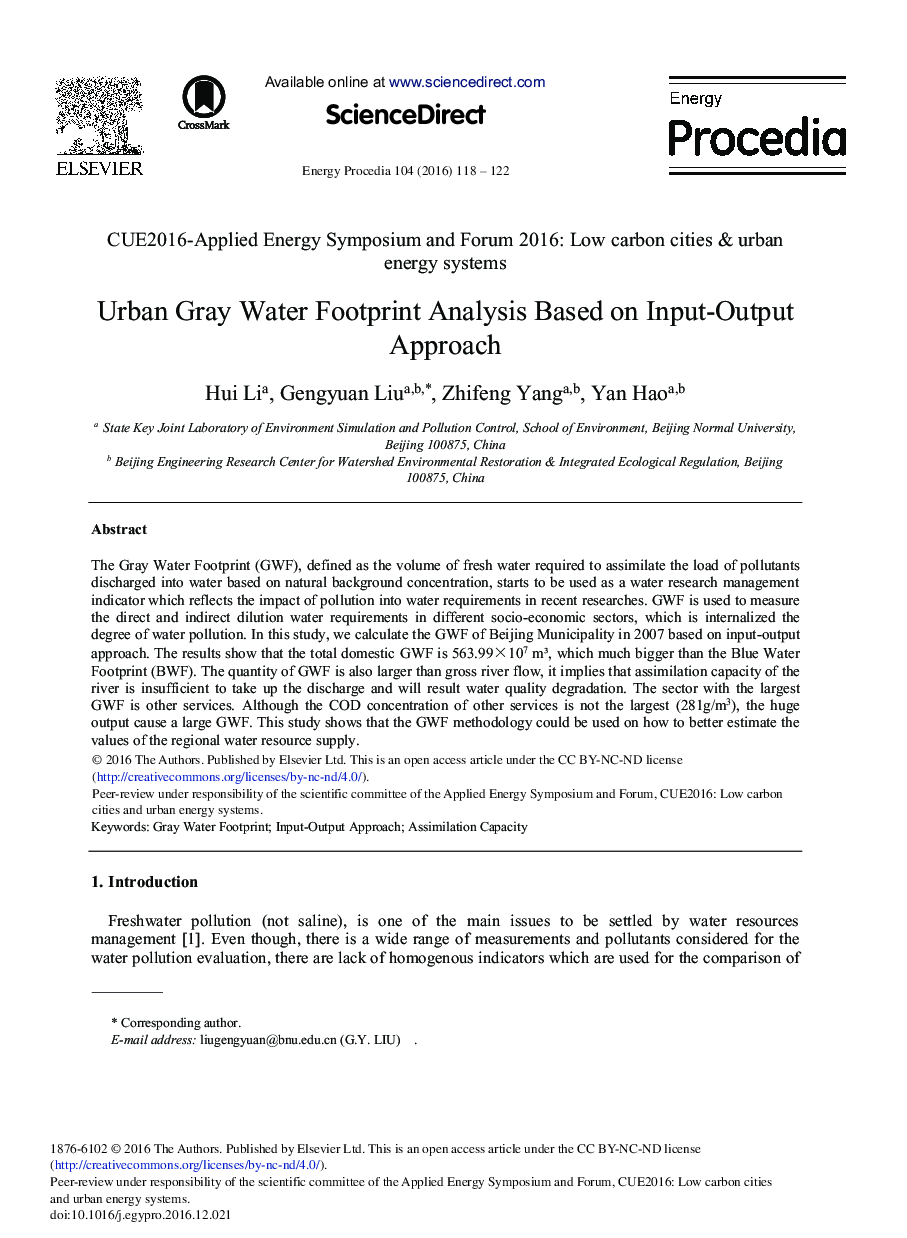| Article ID | Journal | Published Year | Pages | File Type |
|---|---|---|---|---|
| 5446348 | Energy Procedia | 2016 | 5 Pages |
Abstract
The Gray Water Footprint (GWF), defined as the volume of fresh water required to assimilate the load of pollutants discharged into water based on natural background concentration, starts to be used as a water research management indicator which reflects the impact of pollution into water requirements in recent researches. GWF is used to measure the direct and indirect dilution water requirements in different socio-economic sectors, which is internalized the degree of water pollution. In this study, we calculate the GWF of Beijing Municipality in 2007 based on input-output approach. The results show that the total domestic GWF is 563.99 Ã 107 m3, which much bigger than the Blue Water Footprint (BWF). The quantity of GWF is also larger than gross river flow, it implies that assimilation capacity of the river is insufficient to take up the discharge and will result water quality degradation. The sector with the largest GWF is other services. Although the COD concentration of other services is not the largest (281 g/m3), the huge output cause a large GWF. This study shows that the GWF methodology could be used on how to better estimate the values of the regional water resource supply.
Related Topics
Physical Sciences and Engineering
Energy
Energy (General)
Authors
Hui Li, Gengyuan Liu, Zhifeng Yang, Yan Hao,
